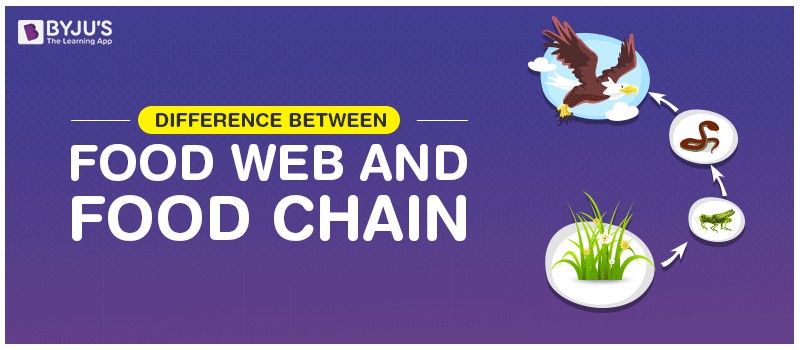The concepts of food chains and food webs are fundamental to understanding how energy and nutrients flow through ecosystems. While both illustrate feeding relationships between organisms, they differ significantly in their complexity and scope. Let’s delve into what each entails and clarify the crucial distinctions between them.
A food chain represents a simplified, linear pathway of energy transfer. It traces the flow of energy and nutrients from one organism to another in a sequential manner. For example, grass is eaten by a grasshopper, which is then eaten by a frog, and finally, the frog is consumed by a snake. Each organism occupies a specific trophic level within the chain. Primary producers, like plants (grass in our example), form the first trophic level. Herbivores that consume the producers constitute the second trophic level, followed by carnivores at higher levels. Apex predators, sitting at the top of the food chain, represent the highest trophic levels.
 Linear representation of a food chain showing energy flow from grass to snake
Linear representation of a food chain showing energy flow from grass to snake
In contrast, a food web portrays a more intricate and realistic view of feeding relationships. It comprises numerous interconnected food chains, reflecting the complex interactions within an ecosystem. Organisms rarely rely on a single food source; instead, they participate in multiple food chains simultaneously.
Food Chain vs. Food Web: Key Differences
The following table summarizes the primary differences between a food chain and a food web:
| Feature | Food Chain | Food Web |
|---|---|---|
| Structure | Linear pathway | Interconnected network |
| Complexity | Simple | Complex |
| Energy Flow | Single, direct path | Multiple, interwoven paths |
| Diet | Organisms feed on one specific trophic level below | Organisms can feed on multiple trophic levels below |
| Adaptability and Competitiveness | Limited impact | Enhances adaptability and competitiveness |
| Ecosystem Representation | Simplified | Accurate representation |
Adaptability and the Food Web
The interconnected nature of a food web provides organisms with greater flexibility and resilience. If one food source becomes scarce, an organism can switch to another available prey or food item. This adaptability is crucial for survival in fluctuating environments. Conversely, organisms in a food chain are more vulnerable to disruptions, as their survival is heavily dependent on a single, specific food source. A change in the population of a single organism within a food chain can cause large effects.
Furthermore, the food web reflects the competition among species for resources. It showcases how different organisms interact and compete for food and how these interactions ultimately shape the ecosystem’s structure and stability. The richer the food web, the higher the stability of the ecosystem and the better it can withstand environment stress and population fluctuations.
Impact on Ecosystem Understanding
Food chains are valuable for illustrating basic energy flow. However, food webs provide a more realistic and comprehensive understanding of ecosystem dynamics. Food webs demonstrate the intricate relationships between species and the potential consequences of changes in population size or environmental conditions. They are indispensable tools for ecologists and conservationists in their efforts to protect and manage ecosystems effectively.
In Summary
While a food chain depicts a simple linear pathway of energy and nutrient transfer, a food web represents a complex network of interconnected food chains. Food webs reflect the diverse feeding relationships within an ecosystem and highlight the adaptability and competitive interactions that shape the community. Ultimately, understanding both food chains and food webs is essential for comprehending the intricate dynamics of our natural world. Both concepts are very important to ecological biodiversity and ecosystem health, as a disruption to either can cause catastrophic ramifications.